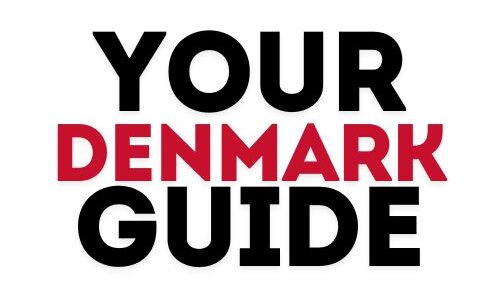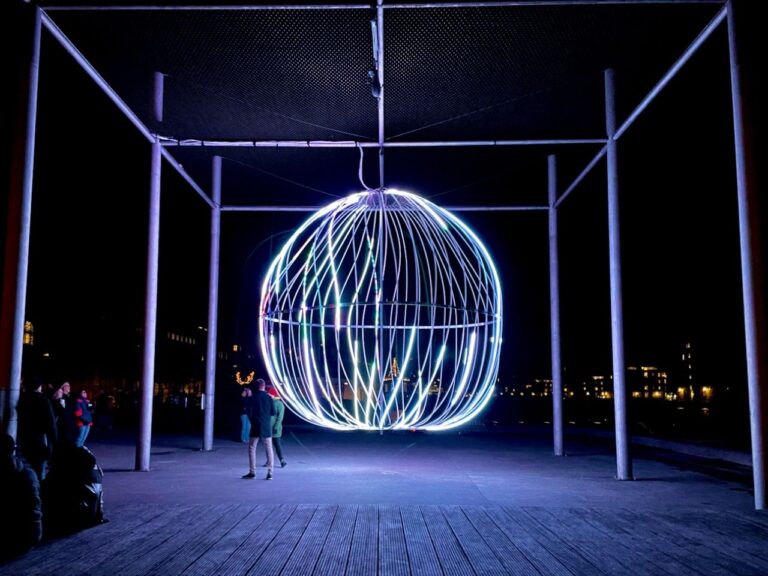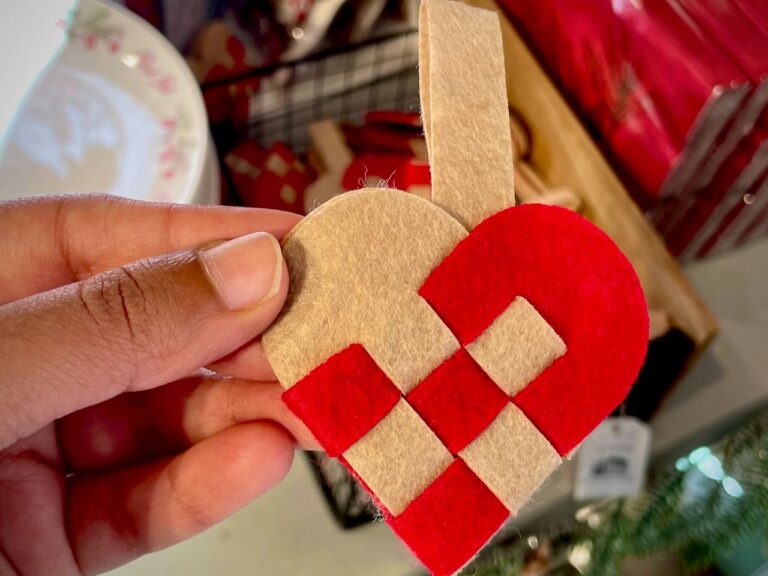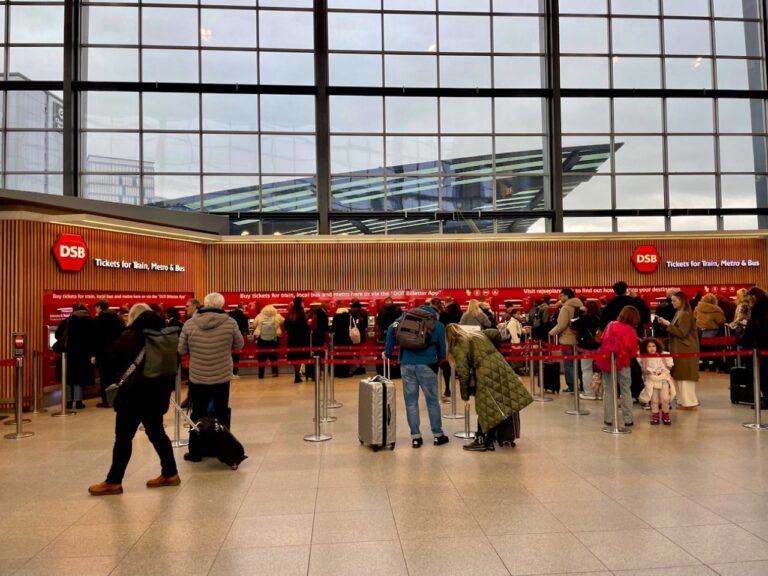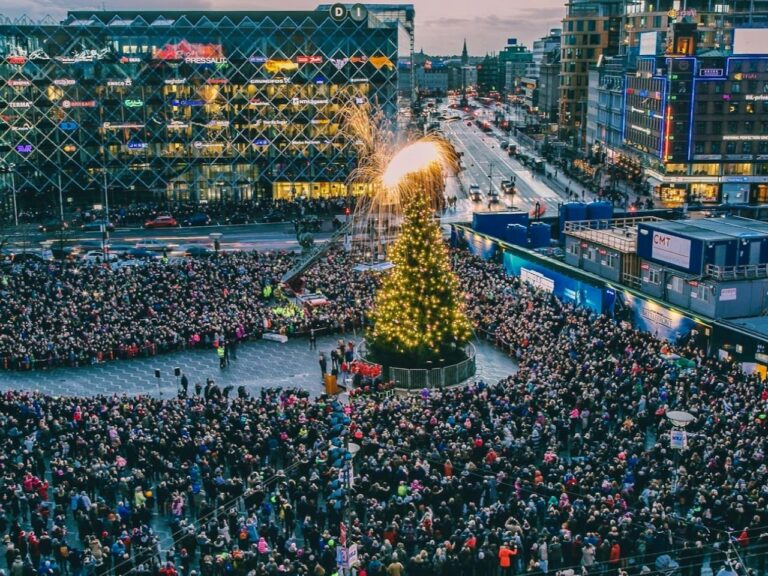Does It Snow In Denmark? What You Need To Know

If you’re planning a winter holiday in Denmark, you might be wondering, “Does it snow in Denmark? or How cold is the weather in Denmark?”.
As someone living in Denmark, I have spent many winters there. From practical tips to must-visit locations, I’ll help you prepare for a memorable winter experience.
The weather in winter can make or break your winter plans. But don’t worry!
I’ll walk you through everything you need to know about snowfall during winters in Denmark, including what you should pack.
Let’s dive right into it!
In This Post:
Does it snow in Denmark?
Yes, it snows every year in Denmark. However, it receives less snow than other Scandinavian countries due to its location and the Gulf Stream.
When does it snow in Denmark?
Snowfall season in Denmark starts in December and goes until February, with the coldest month being February. The skies are usually overcast, adding an extra blanket of white.
How much does it snow in Denmark?
If you’re wondering whether Denmark gets a lot of snow, the short answer is no. Snow does fall, but usually in small amounts and often doesn’t stay too long.
Unlike the neighbouring countries like Norway and Sweden, Denmark receives only less snow. It has mild winters with minimal snowfall but with considerable rainfall.
Denmark receives between 29 and 31 days of snowfall a year. On average, it snows seven days every month in December, January, and February. This decreases to five snow days in March and three days in April.
While that might not seem like much, the Danish winters can still be quite cold and windy due to its location between the North Sea and the Baltic Sea.
When I say it will be windy, please don’t take it lightly. It will be really windy!
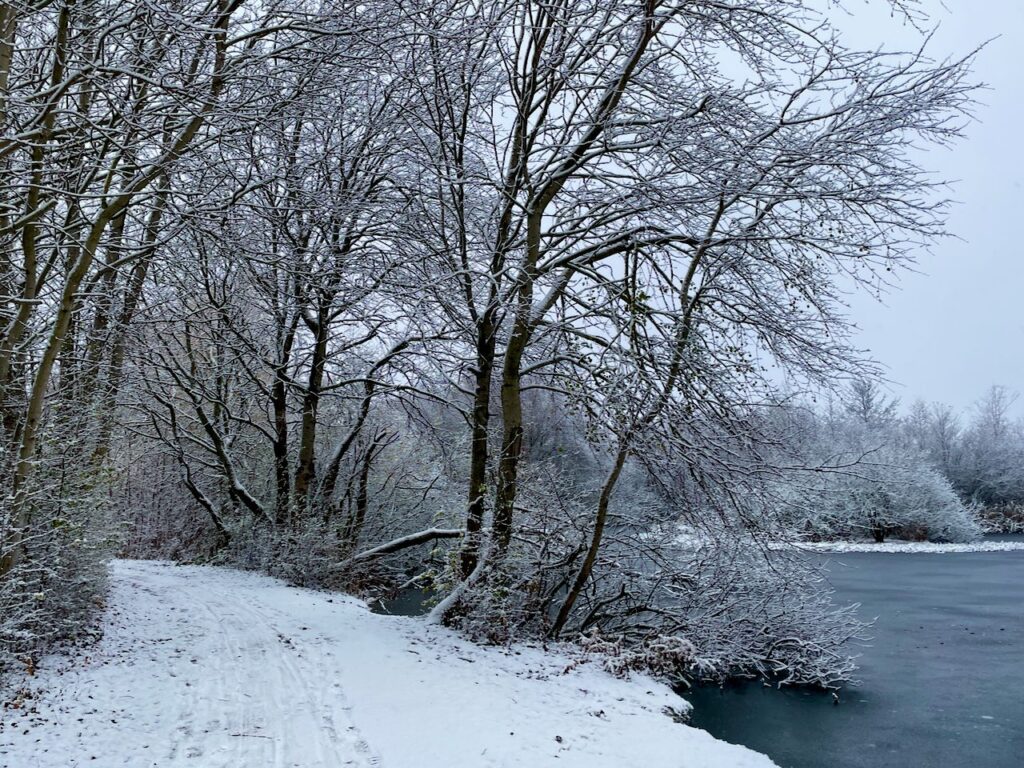
Temperature in Denmark during winter
The average temperature in Denmark during December ranges from 32 ℉ to 39 ℉ (0 ℃ to 3.8 ℃), and during January and February, the average temperature ranges from 30 ℉ to 37 ℉ (-1.1 ℃ to 2.7 ℃).
Did you know? The coldest day in Denmark was recorded on January 1982 with temperatures of -31 °C or -23.8 ℉.
Looking for winter activities in Denmark? Check out these 17 things to do in Denmark during winter!
Snowfall in Denmark by Region
The intensity and frequency of snowfall in Denmark vary depending on the region and the specific weather conditions of that year.
The island of Bornholm receives the highest average snowfall, ranging from 30 to 40 cm per year.

The southern parts of Funen and Zealand experience more snowfall with an average of 20 to 30 cm per year than Northern Jutland, which receives an average snowfall of 10 to 20 cm per year.
The Møllehøj, the highest peak in Denmark, is just 170.86 m or 560.6 feet above sea level.
Did you know? In January 2024, Hald near Randers recorded 19.7 inches (50 cm) of snow, the highest in 13 years.
Snow in Copenhagen
The capital city of Copenhagen experiences the most snow in December, January, and February. The average snowfall in Copenhagen is 20-50 cm.
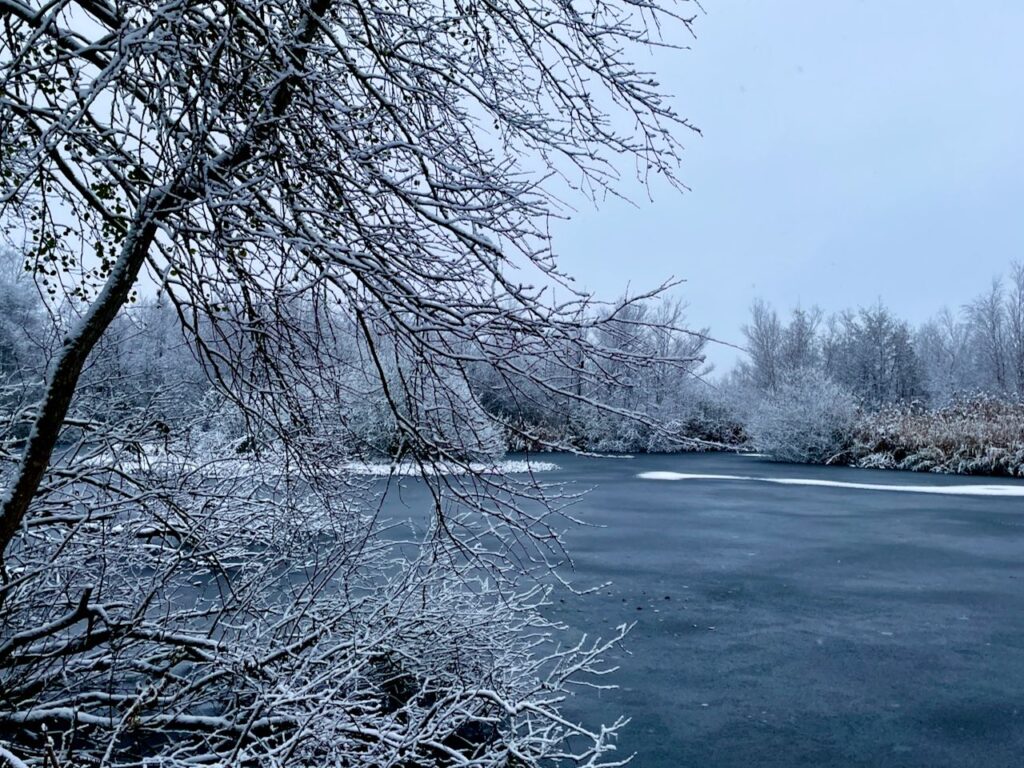
What are the best platforms to get weather updates in Denmark?
Danish Meteorological Institute (DMI), AccuWeather, and Google Weather are the most commonly used by the Danish people to get weather updates in Denmark.
I rely on Accuweather and DMI and found that their rain and snow forecasts are mostly accurate. The weather predictions tend to align well with what I experience.
Of course, no weather app is perfect, but it is useful for planning outdoor activities, especially in Denmark, where the weather can be quite unpredictable. That said, I always check a couple of sources just to be safe.
Did you know? The days are shorter during the winter season in Denmark. The sun rises at around 8:30 and sets at 15:30 CET (differs every day) with only seven hours of daylight.
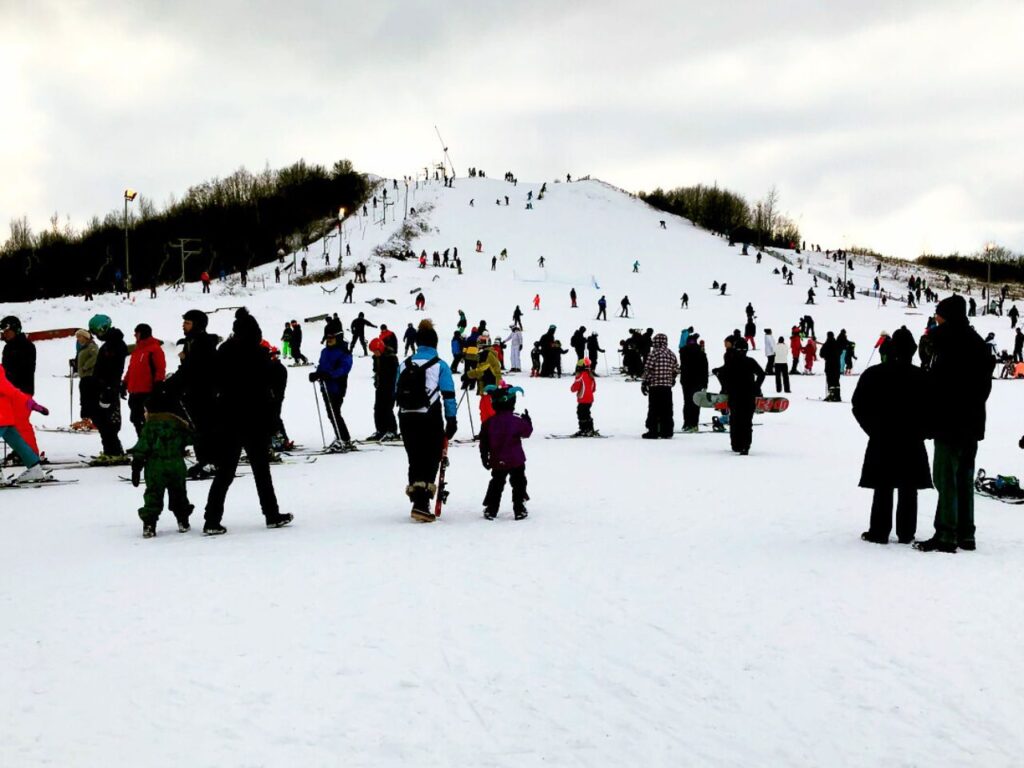
What to wear when it snows in Denmark?
If you plan to visit Denmark during winter and want to be prepared for the weather, it’s important to know what to pack and how to dress appropriately.
“There’s no such thing as bad weather, only unsuitable clothing” – Alfred Wainwright.
Even with limited snow, Danish winters can be colder due to strong winds, which is why you’ll see people wearing multiple layers of clothing during the winter months. So layering up is the key.
Here are some essentials you should wear while traveling to Denmark in winter. I don’t step out without these when it snows!
- A waterproof jacket – The humidity makes the air quite damp in Denmark. Hence, winters are a mix of snow and rain. A good waterproof jacket is a must to keep you dry.
- Thermal layers – Having good thermal wear can make a significant difference in staying warm in cold conditions.
- Gloves and hats – Protecting your hands and head is crucial in cold weather, so be sure to bring a good pair of gloves and a beanie or hat.
- Scarves – An additional protection to keep your body warm.
- Waterproof boots – Denmark experiences snow and rain during winter, making the streets slippery and the atmosphere quite damp. So waterproof boots with good grip are essential for walking around when it snows.
Get the full packing list for Denmark and know What to wear in Denmark for all the seasons!
What to Do in Copenhagen When It Snows?
Looking for fun things to do in Copenhagen when the snowfall starts? There are plenty of activities to enjoy during the snowy season.
Check out the list of 17 winter activities, including both outdoor and hygge indoor experiences for you to enjoy.
Frequently Asked Questions
Does it snow in Copenhagen in December?
Yes. During December, on average, it snows for seven days in Copenhagen.
Does it snow in Copenhagen at Christmas?
Snow during Christmas is rare in Denmark and is not guaranteed. But the weather feels much colder than it actually is, with cold winds blowing everywhere.
During Christmas, from Christmas markets to the Santa Lucia Parade, you’ll still find plenty of festive cheer even without the snow.
What months does it snow in Denmark?
On average, it snows seven days every month in December, January, and February. This decreases to five days of snow in March and three days in April. Denmark experiences an average of 29-31 days of snow every year.
Does it snow in Copenhagen in January?
Yes, it snows in Copenhagen in January for an average of at least 7 days.
Does it snow in Copenhagen in February?
Being the coldest month of the year, of course, it snows. On average, expect at least seven days of snow in Copenhagen in February.
Is Denmark Cold?
Yes, Denmark is cold in winter from December to February. The temperatures aren’t extreme, but the strong winds can make it feel much colder than the actual temperature is.
Final Thoughts: Snow in Denmark
While Denmark doesn’t experience the heavy snowfall of its Scandinavian neighbors, snow in Denmark still turns this flat coastal country into a beautiful winter wonderland.
Now that you have all the information about the snow in Denmark, make the most of your time when the snowflakes start to fall!
Denmark Travel Checklist
More Posts
- What is J Day in Denmark? How it is celebrated?
- Using tap water in Denmark for showering, cooking, and drinking? Know these first!
- How is Saint Lucia Day celebrated in Copenhagen?
- Where to go ice skating in Copenhagen?
- Denmark is a flat country. Can you ski in Denmark?
- Top Copenhagen food markets you must visit
- Must do Christmas activities in Copenhagen for the best Christmas
- Danish Christmas traditions: How do Danes celebrate Christmas?
- Food and shopping in Copenhagen Christmas markets
- Lovely Christmas gifts you shouldn’t miss buying from Denmark
- Chase festive Christmas lights in Copenhagen
- Experience a traditional Danish Christmas lunch – Julefrokost
- High-rise terraced hotels in Copenhagen for the best New Year’s Eve
- New Year’s Eve celebrations in Copenhagen: What you need to know?
- Experience the best Christmas in Copenhagen on guided tours
- Mouth-watering Danish “Christmas” food and drinks
- Where to stay in Copenhagen? Best hotels with Spa
- 10 Must-visit Danish Bakeries in Copenhagen
- Restaurants serving Julefrokost during Christmas in Copenhagen
- Top unique things to buy from Denmark as souvenirs
